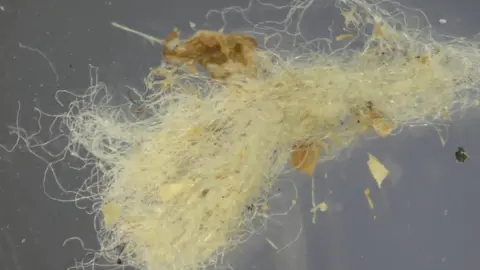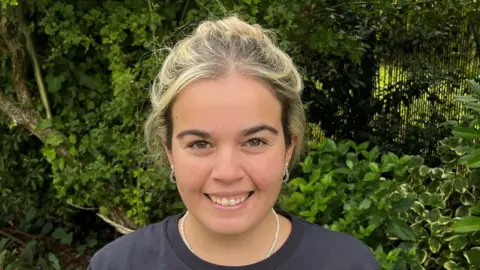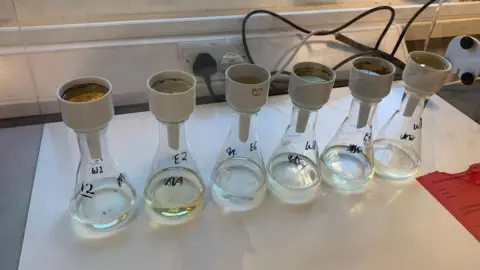‘Shocking’ microplastic research prompts review
 University of Manchester
University of ManchesterA water company has said it is reviewing research by an undergraduate that found high levels of microplastics in an Isle of Wight estuary.
Liberty Turrell, a student from Manchester University, received first-class honors for her dissertation after conducting tests on the estuary of the Medina River.
She said she discovered fibres mainly from wastewater sources such as laundry, rather than plastic litter, which she described as "shocking".
A spokesperson for Southern Water told the BBC: “We welcome any research into this important issue, and are reviewing the findings of this latest publication."
Microplastics are particles which measure less than 5mm, and cause pollution by entering natural ecosystems.
The mudflats are a Site of Special Scientific Interest (SSSI) and provide habitats and breeding grounds to a diverse variety of wildlife species.
 Liberty Turrell
Liberty TurrellMs Turrell said she believed it was easier for people to worry about issues they can see - like plastic bottles on beaches.
"These [microplastics] are not readily available to the eye," she said.
"We don't realise the quantity that is polluting the environment. So studies like these do help us."
Ms Turrell also said her findings made her question whether water companies' sewage discharges were being treated properly.
"If effective wastewater treatment is taking place, microplastics should be less frequently occurring in in our waterways," she said.
 Liberty Turrell
Liberty TurrellJamie Marsh, director of nature recovery at Hampshire & Isle of Wight Wildlife Trust, said the research was "truly staggering".
He said: "Microfibres cause a significant risk to wildlife as they can easily bundle together, form a clump and pose a great threat to marine species.
"They can obstruct the movement of food, disrupt the digestive process and cause eventual death."
A spokesperson for the Environment Agency said: "We are aware that microplastics enter the marine environment from a number of sources, including from the breakdown of larger plastic items.
"Much of this material comes from sources on the land, including littering and poor waste-management practices such as fly-tipping.
"It is important we all work together to ensure waste is disposed of correctly."
But Ms Turrell said her analysis of the samples from the Medina estuary however found "secondary" microplastics of this kind accounted for just 1% - with "primary" microplastics such as fibres from waste accounting for 99%.
 Liberty Turrell
Liberty TurrellA spokesperson for Southern Water said: "We, along with the wider water industry, our regulators and academics, are exploring the impact of microplastics on our environment.
"We need to understand their impact and how we can play our part in effectively treating and removing them from sewage."
You can follow BBC Hampshire & Isle of Wight on Facebook, X (Twitter), or Instagram.
